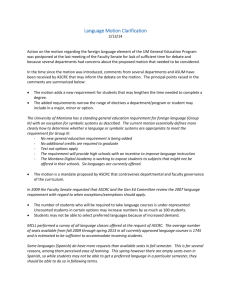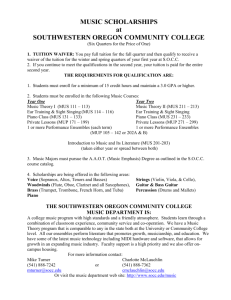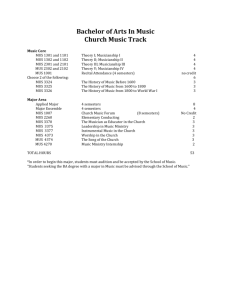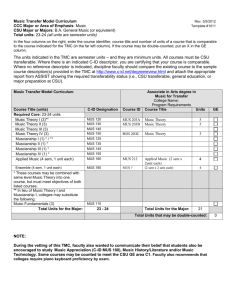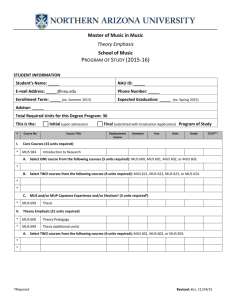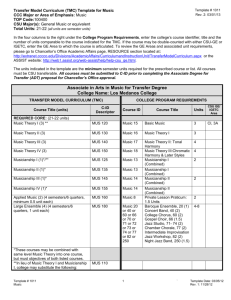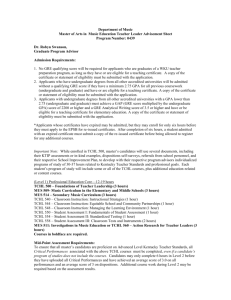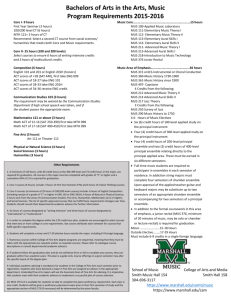Part B_Questionnaire and model
advertisement
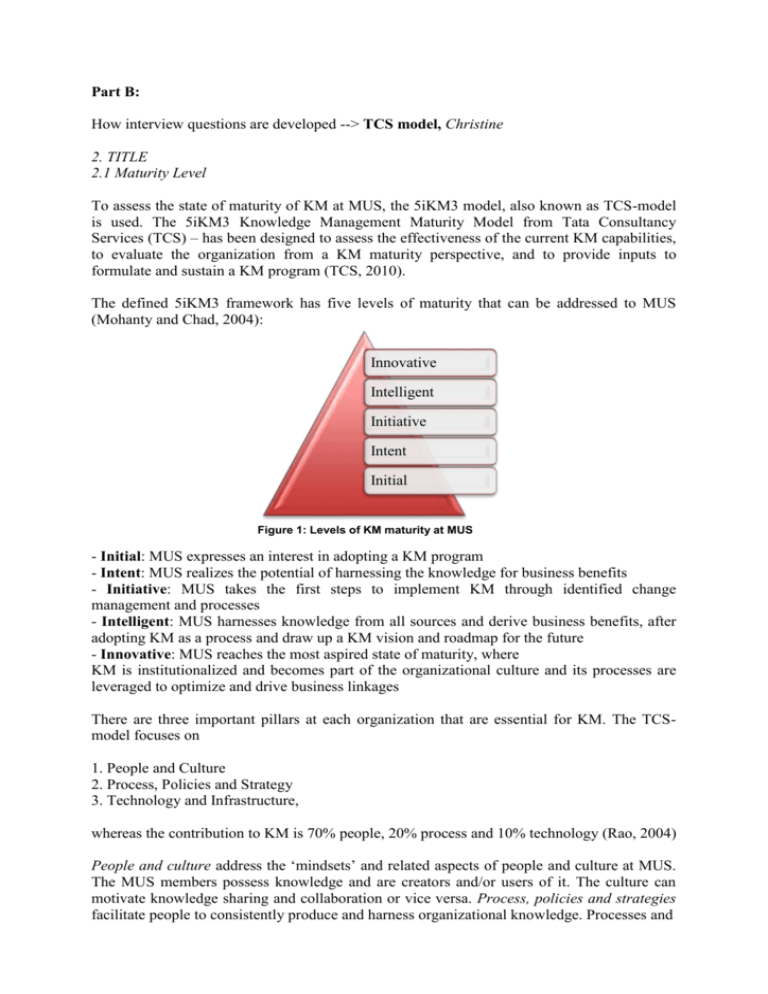
Part B: How interview questions are developed --> TCS model, Christine 2. TITLE 2.1 Maturity Level To assess the state of maturity of KM at MUS, the 5iKM3 model, also known as TCS-model is used. The 5iKM3 Knowledge Management Maturity Model from Tata Consultancy Services (TCS) – has been designed to assess the effectiveness of the current KM capabilities, to evaluate the organization from a KM maturity perspective, and to provide inputs to formulate and sustain a KM program (TCS, 2010). The defined 5iKM3 framework has five levels of maturity that can be addressed to MUS (Mohanty and Chad, 2004): Innovative Intelligent Initiative Intent Initial Figure 1: Levels of KM maturity at MUS - Initial: MUS expresses an interest in adopting a KM program - Intent: MUS realizes the potential of harnessing the knowledge for business benefits - Initiative: MUS takes the first steps to implement KM through identified change management and processes - Intelligent: MUS harnesses knowledge from all sources and derive business benefits, after adopting KM as a process and draw up a KM vision and roadmap for the future - Innovative: MUS reaches the most aspired state of maturity, where KM is institutionalized and becomes part of the organizational culture and its processes are leveraged to optimize and drive business linkages There are three important pillars at each organization that are essential for KM. The TCSmodel focuses on 1. People and Culture 2. Process, Policies and Strategy 3. Technology and Infrastructure, whereas the contribution to KM is 70% people, 20% process and 10% technology (Rao, 2004) People and culture address the ‘mindsets’ and related aspects of people and culture at MUS. The MUS members possess knowledge and are creators and/or users of it. The culture can motivate knowledge sharing and collaboration or vice versa. Process, policies and strategies facilitate people to consistently produce and harness organizational knowledge. Processes and policies facilitate people in the KM life cycle, e.g. by maintaining a structured archive. Technology and infrastructure are enablers to create and harness knowledge across organization, e.g. by encouraging collaboration enabling technologies like wikis (Mohanty and Chad, 2004). All three pillars will help to create a KM environment and turn tacit knowledge into explicit knowledge. The knowledge assets are created, captured, stored and (re)used in the operational process. 2.2 Assessment at MUS To assess and evaluate the maturity of KM at MUS, the project group has the following approach: a) Data Collection Definition of the business of MUS and its use for KM Identification of its stakeholders Identification of the current state of MUS regarding the three pillars People & Culture, Technology & Infrastructure and Process, Policy & Strategy b) Consolidation and Interpretation of the data Evaluation of the KM maturity Reflection of KM maturity in the TCS model a) Data collection To find out, at which level MUS is, the KM International Apprentices developed a questionnaire1 that will bring additional value to the information available online. The questionnaire is structured in three parts: general information about the interviewee, the knowledge transfers at MUS and the awareness about KM of the interviewee. In the first part more information about the interviewed person is gathered to get to know him/her. Questions cover the position, the term of office, the responsibilities and the membership of MUS. These answers also help to interpret the outcomes of the second part better. The questions in the second part are designed to get information about the knowledge transfer and information turnover within MUS and between MUS and its stakeholders. It is divided in three sub-categories as analyzed with the TCS-model. To evaluate the maturity of KM at MUS, the culture and the people at MUS have to be analyzed. The MUS members are the knowledge source of the organization. The survey includes therefore questions about the work atmosphere and communication. Do people know whom to contact and are they on the actual stand of news? How do they find about things and do they know what their colleagues are doing? Also the processes, policies and strategies facilitate people to consistently produce and harness organizational knowledge. Thus the questions cover the existence and accessibility of guidelines and policies as well as the sources of information used. Finally, the Technology and Infrastructure plays also an important role as mentioned before. The questionnaire investigates the technology used to communicate internally and with stakeholders as well as the infrastructure for the MUS members. Also suggestions for improving the knowledge flow are being addressed. 1 See Appendix xx In the third part the members’ awareness of KM is investigated by asking whether the members know something about KM. b) Consolidation and Interpretation of the data The TCS model categorized the information about KM in an organization as followed: Figure 2: Key Operational Processes with regard to the maturity states (Rao, 2004) The outcomes of the interviews with MUS members and the online research date will be evaluated with regard to that framework. ____________________________________________________________ sources: Kuriakose K.K., Baldev Raj, S.A.V. Satya Murty and P. Swaminathan (2010): Knowledge Management Maturity Models – A Morphological Analysis, Journal of Knowledge Management Practice, Vol. 11, No. 3, September 2010 Mohanty Santosh K. and Manish Chad (2004): 5iKM3 Knowledge Management Maturity Model for Tata Consultancy Services Ltd., 2004, available at http://www.tcs.com/SiteCollectionDocuments/White%20Papers/5iKM3%20Knowledge%20 Management%20Maturity%20Model.pdf Rao Anand (2004): Knowledge Management using Enterprise Content Management System for Tata Consultancy Services Ltd., 2004, available at http://www.tcs.com/SiteCollectionDocuments/White/20Papers%2FKnowledge%2520Manage ment%2520using%2520Enterprise%2520Content%2520Management%2520System.pdf Tata Consultancy Services Ltd. (2010): BIPM Brochure Knowledge Management 5iKM3, April 2010, available at http://www.tcs.com/resources/brochures/Pages/Knowledge_Management_5iKM3.aspx ___________________________________________________________________________ Highlights for Slides: 5 States of Maturity Innovative Intelligent Initiative Intent Initial Three pillars contribute to KM 1. People and Culture 2. Process, Policies and Strategy 3. Technology and Infrastructure help to create a KM environment turn tacit knowledge into explicit knowledge. The knowledge assets are created, captured, stored and (re)used in the operational process. Approaching MUS: c) Data Collection Definition of the business of MUS and its use for KM Identification of its stakeholders Identification of the current state of MUS regarding the three pillars People & Culture, Technology & Infrastructure and Process, Policy & Strategy Questionnaire in 3 parts: 1. General information about MUS 2. Information about knowledge transfer at MUS (three pillars) 3. Awareness of KM d) Consolidation and Interpretation of the data Evaluation of the KM maturity Reflection of KM maturity in the TCS model Matrix _____________________________________________________________________ This could be used for summary at the end, source Tata Consultancy Services Ltd. (2010): BIPM Brochure Knowledge Management 5iKM3, April 2010, available at http://www.tcs.com/resources/brochures/Pages/Knowledge_Management_5iKM3.aspx While KM changes the way people use processes and technology, it places a premium on managing people's mindsets by enabling employees to overcome their inherent resistance to share knowledge. This enterprisereadiness is an important factor in KM to realize its intangible benefits. It is equally important to define the processes that encourage the capturing, storing and sharing of knowledge and at the same time provide the ability to measure the effectiveness of KM. Technology also plays a vital role in converting tacit knowledge into explicit information and preventing information silos. While implementing a KM solution by incorporating these three key foundation pillars of people, process and technology, one must also ensure its continuity, which makes it critical to assess the initiative's maturity. Our wellKM vision and roadmap for the future Our solution considers people's mindset, organizational culture, process rigor and flexibility, technology, and infrastructure to create a holistic picture of your KM capabilities. With well-architected templates and questionnaires, this robust framework helps identify your enterprise's current state in terms of people, process, and technology. We assess and articulate your current organizational and KM processes, benchmarking them against the 5iKM3 concept model. This helps us identify interventions for enhancements and plan a future course of action for your enterprise.
